
Abutilon : plant, pruning, maintain
Contents
Abutilon in a nutshell
- Abutilon offers a generous flowering that lasts for many months
- Not very hardy, it can only be planted in the garden in mild climates
- It is the terrace bush par excellence
- It enjoys sunny situations but not scorching sun
- It appreciates cool, well-drained soils
A word from our expert
The Abutilon, sometimes referred to as “Chinese Lantern” or “Parlour Maple”, is a beautiful bush with original flowers. It is valued for its finely cut, somewhat exotic foliage and its vividly coloured flowers from spring to autumn. From the creeping Abutilon (Abutilon megapotamicum) to the Abutilon pictum with its variegated foliage, not to mention the hybrid Abutilon (Abutilon hybridum) in multiple colours, the Abutilon is a highly decorative bush.
This warmth-loving plant, not very hardy (-5 to -10°C), is easy to grow in the ground in a mild climate. In cooler climates, grow the Abutilon in a pot to bring indoors during winter.
The Abutilon thrives in full sun or partial shade in fresh, well-drained soil.
Whether in a pot or in the ground, in a border or trained against a wall, this attractive bush adds a touch of exoticism and colour to the garden.
How to successfully plant Abutilon in a pot, its pruning, taking a cutting of Abutilon, our experts answer all your questions about this generous and easy-to-maintain bush.
Description and Botany
Botanical data
- Latin name Abutilon
- Family Malvaceae
- Common name Abutilon
- Flowering from April-May until autumn
- Height 1 to 5 m
- Exposure Sun, partial shade
- Soil type All, well-drained
- Hardiness -5°C-10°C
The genus Abutilon comprises around 150 species of herbaceous, climbing, and bushy plants, as well as numerous horticultural hybrids. Abutilon, or “Parlour Maple”, is a flowering bush that, like hollyhocks and hibiscus, belongs to the Malvaceae family.
Only a few bushy species native to Chile or Brazil are cultivated in France, among the best known are Abutilon megapotamicum, a spreading or even climbing species if trained, which has given rise to many cultivars, Abutilon pictum with variegated foliage, Abutilon x hybridum or hybrid Abutilon, and Abutilon vitifolium, certainly one of the largest abutilons.
The habit varies according to the species, being more or less trailing and requiring support, or bushy and upright. The branches are thin and flexible or upright and more robust. It can form a large ground cover or a beautiful vigorous bush from 1 m to 3.50 m in height with almost as much spread.
Its growth and longevity are variable: average to rapid, short-lived or relatively long-lived depending on the species.
The foliage, evergreen to semi-evergreen in mild climates, deciduous elsewhere, consists of simple leaves or those divided into 3 to 7 lobes with serrated edges, resembling those of maples, which has earned Abutilon the nickname “apartment maple.” In Abutilon vitifolium, the foliage resembles that of the vine.
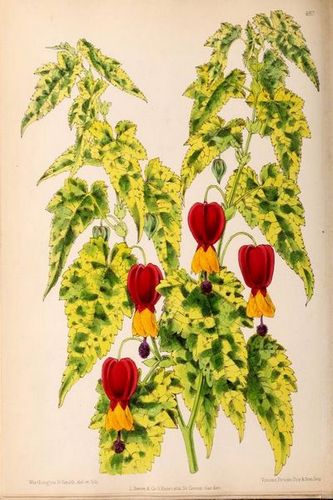
Abutilon megapotamicum ‘Variegatum’
Lanceolate, ovate to rounded, they measure 10 to 15 cm long, are sometimes slightly hairy, and develop on young shoots that are sometimes grey-felted. They can be bright green, light green, dark green, grey-green, or even variegated, speckled, or striped with gold or pale yellow depending on the cultivars.
From May to October without interruption, the flowers of abutilon bloom, bright and colourful. This bush produces abundantly, astonishing flowers in the shape of rounded bells, Chinese lanterns, suspended balls on a long petiole, or open cups. The flowers are generally solitary in the axils of the leaves, sometimes grouped in clusters or panicles.
Measuring 4 to 8 cm long or wide, they feature a beautiful dark pink, orange, yellow, white, red calyx, and sometimes blue or mauve, and are centred on a heart of long prominent stamens that are also coloured. Hybrid abutilons bear the largest flowers and offer stunning colours ranging from pure white to lemon yellow, including all shades of pink, orange, apricot, lavender blue, purple, and even fire red.
Some are veined with colours of varying intensity (Abutilon pictum), while others are curiously bicoloured yellow and red (Abutilon megapotamicum or “Chinese lantern”) reminiscent of the Belgian flag!
They remain in bloom tirelessly, from spring until frost, in some species. This flowering is followed by the formation of numerous seeds.
Abutilon is not very hardy and can only be planted in the ground in mild climates. This very floriferous plant is not demanding regarding soil type. Abutilon grows in rather cool but well-drained soil, rich, humus-bearing, in non-burning sun or partial shade.
Moderately hardy (from -5 to -10 °C depending on the species), it can therefore only be planted in the ground in mild climates, south of the Loire, as well as along the entire oceanic facade of our country and in the Mediterranean region. Elsewhere, it is grown in a large pot on the terrace from April to October and brought in for winter to protect it from severe cold.
Abutilon takes on its full value against a backdrop of dark evergreens, in a shrub border or as a solitary plant on a lawn, trained against a warm wall or even as ground cover. In colder regions, on terraces and balconies, its abundant flowering will attract attention.
Read also
Abutilon: how to overwinter it properlyMain species and varieties
There are about 150 species of abutilons and numerous horticultural hybrids, but only a few species are cultivated in France.
The most popular
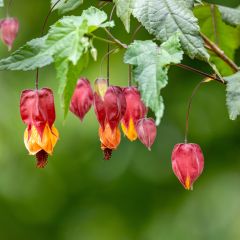
Abutilon megapotamicum
- Flowering time July to November
- Height at maturity 2 m

Abulilon suntense
- Flowering time June, July
- Height at maturity 3 m
Discover other Abutilon
View all →Available in 1 sizes
Available in 1 sizes
Available in 1 sizes
Available in 1 sizes
Available in 1 sizes
Available in 1 sizes
Available in 1 sizes
Available in 1 sizes
Available in 1 sizes
Available in 1 sizes
Young plantation
Where to plant the Abutilon?
The Abutilon is not a greenhouse plant: it is grown in the ground in the garden, in favoured regions and in a pot to be sheltered in winter in other regions.
Not very hardy, the abutilon appreciates mild winters and sunny exposures in Mediterranean regions or along the Atlantic coast.
It is sensitive to frost and draughts and does not withstand temperatures below 10°C. A. megapotamicum is the hardiest of the abutilons (-10°C). However, it is capable of regrowing from the stump without difficulty after enduring short frosts, if planted in a very sheltered position.
It grows in full sun in regions with cool summers or in partial shade in warm climates, protected from strong winds, in fertile soil that remains consistently moist in summer and well-drained. Once well established, it will be more resistant to drought.
The abutilon dislikes confined spaces: give it some space!
It can be planted both in a border and as a specimen. A. megapotamicum can be trained against a south-facing wall or on a trellis or can be used untrained as ground cover. In regions with harsh winters, it should be grown in a pot on a terrace.
When to plant an Abutilon
Plant the Abutilon in spring in April or May or in autumn in September or October, in mild climates.
How to plant the Abutilon
In the ground
Preferably choose a well-sheltered location facing south, near a wall, especially to be able to train A. megapotamicum, which, lacking tendrils, will not cling to its support by itself.
- Dig a hole 3 to 5 times wider than the root ball
- Make a good gravel bed at the bottom of the hole
- Plant the bush at collar level in the centre of the hole
- Fill the hole with a mixture of potting soil, well-matured compost, and a handful of river sand mixed with the extracted soil
- Firm down with your foot
- Water thoroughly after planting and during summer, in periods of intense heat
Planting the Abutilon in a pot
Planting the Abutilon in a pot is simple as long as the substrate is very well-drained, moist but without standing water.
- Choose a large pot with a diameter of 40 to 70 cm
- Spread a drainage layer (gravel, broken terracotta, or clay balls) of at least 4 cm at the bottom
- Fill with a mixture composed of half garden soil, a quarter potting soil, and a quarter compost
- Keep the substrate moist throughout the growing season by watering regularly
- Bring the plant indoors to a bright, cool place (between 5 and 15°C) as soon as the first frosts occur (for further reading: “Abutilon: how to winter it well“)
- Take it out onto the terrace in spring, placing it sheltered from wind and cold
→ Learn more about growing Abutilon in a pot
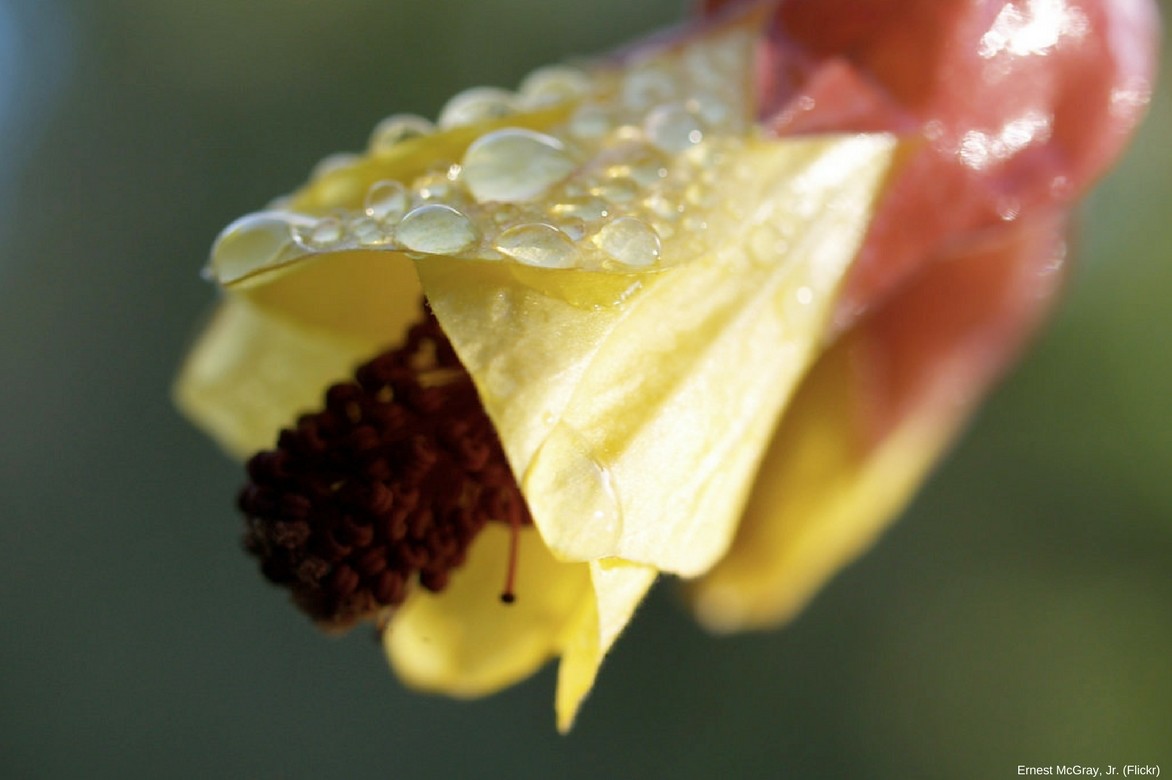
Close-up of a flower of Abutilon megapotamicum
Pruning and maintenance
Abutilon is easy to grow in regions where it does not freeze severely: watering and fertilising will suffice to keep this rather greedy plant healthy.
In the ground
In summer, water it generously and regularly to keep the soil consistently moist but not waterlogged. It is quite drought-resistant once well established. In winter, watering is unnecessary.
It will display rapid growth if its soil is regularly enriched.
Each year, in autumn, scratch the soil at the base of the plant and on the surface, adding a few shovelfuls of well-decomposed compost.
Throughout the growing season, from spring to autumn, add a liquid fertiliser to the watering can every month.
As the branches of A. megapotamicum grow, tie them to their support.
In regions where frost is a concern, mulch the stump with straw or dry leaves.
Care for potted Abutilon
Pot cultivation is very well suited to this bush, but it does require a bit of attention. Water abundantly every day in summer. In spring and autumn, simply avoid letting the root ball dry out completely. In winter, reduce watering to once every 10 days and stop fertilising.
- During growth, apply flowering plant fertiliser every 15 days.
- Before the first frosts, at the end of October, bring the abutilon into a cool (in a greenhouse, conservatory, or winter garden) and bright room (no more than 15°C). It needs this cool period to bloom well the following year.
- Repot every spring into a slightly larger pot with a well-fertile substrate.
- As soon as frost is no longer a concern, take your plant out to the balcony or garden.
Pruning Abutilon
Annual pruning is necessary. Abutilon requires minimal pruning to encourage new shoots in spring and maintain a compact shape.
When to prune?
At the beginning of spring, in February-March, before flowering.
How to prune?
- Remove dead, tangled, and poorly placed branches to aerate the centre of the branching
- Shorten the stems by one third
- As growth progresses, pinch (cut with fingers or shears) the tips of young shoots to encourage branching and keep an abutilon well-flowering
- Remove faded flowers as they occur
- If frost has damaged part of the foliage, significant pruning of the plant may be necessary at the end of winter: it will regrow from the stump without issue.
→ Learn more in our tutorial: How to prune an Abutilon?
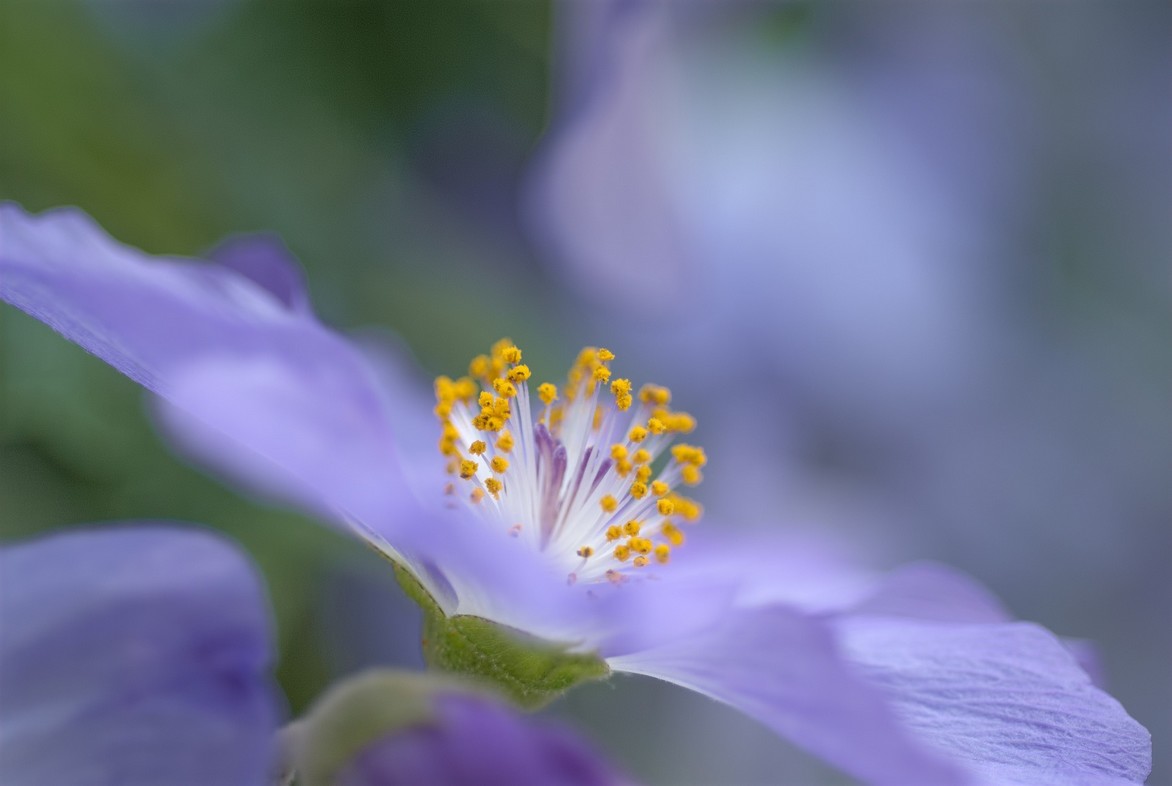
Close-up of the golden stamens of a flower of Abutilon suntense.
Diseases and potential pests
In open ground, when well established, abutilon is spared from most diseases and does not really have any formidable enemies. However, as soon as the growing conditions are not satisfactory, abutilon becomes vulnerable.
It can be infested by aphids and lepidopterans without being seriously affected: spray the plant with a soapy water solution made from black soap or Marseille soap.
In poorly drained soil, it can show a strong sensitivity to powdery mildew, characterised by the appearance of a white fluff on the leaves: spray with horsetail decoction or nettle manure.
Multiplication
Abutilon is easily propagated by herbaceous cuttings in spring or semi-woody cuttings in August-September.
How to take an Abutilon cutting
- Take a stem just below an eye, including 5 buds
- Plant it by inserting 3 buds of the 5 buds into a well-draining mix of sand and potting soil
- Keep the substrate moist but not soggy until rooting occurs, which happens quickly in about 1 month
- Transplant your cuttings into pots or directly into the ground the following spring
Quick cutting: You can also perform propagation by cuttings of young stems simply in water: once the roots appear, transfer the cutting to a pot of saturated potting soil. Allow the substrate to dry out over a period of 15 days. Let the young plants harden off a bit until autumn, then transplant them into the ground.
→ Learn more in our tutorial: How to propagate Abutilon?
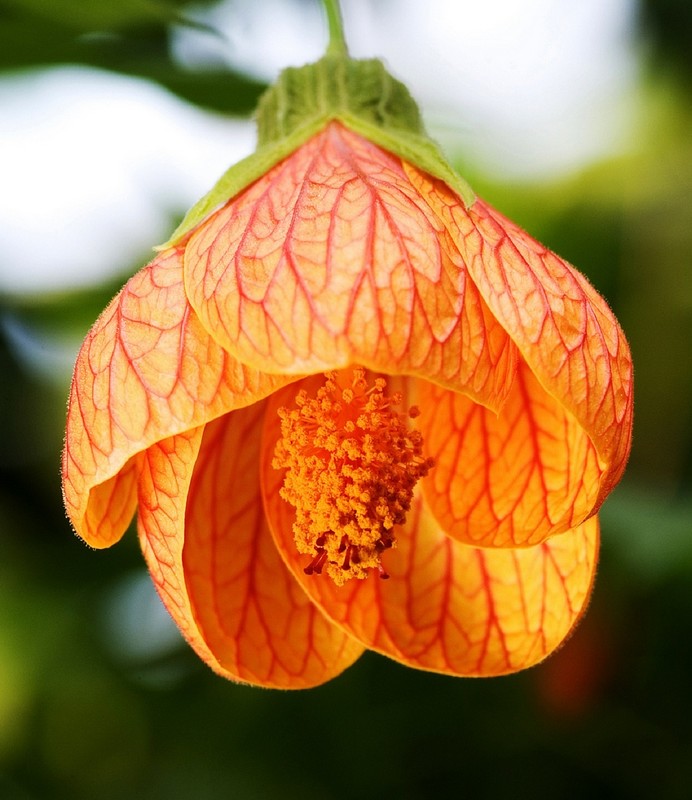
Orange flower veined with red of Abutilon pictum.
Associating Abutilon in the garden
Flowering continuously from late spring to early autumn, Abutilon lends itself to all compositions, in the romantic scenes of a white garden or in a lush and colourful tableau at the height of summer.
It will be highlighted against a dark backdrop of foliage or in a shrub border.
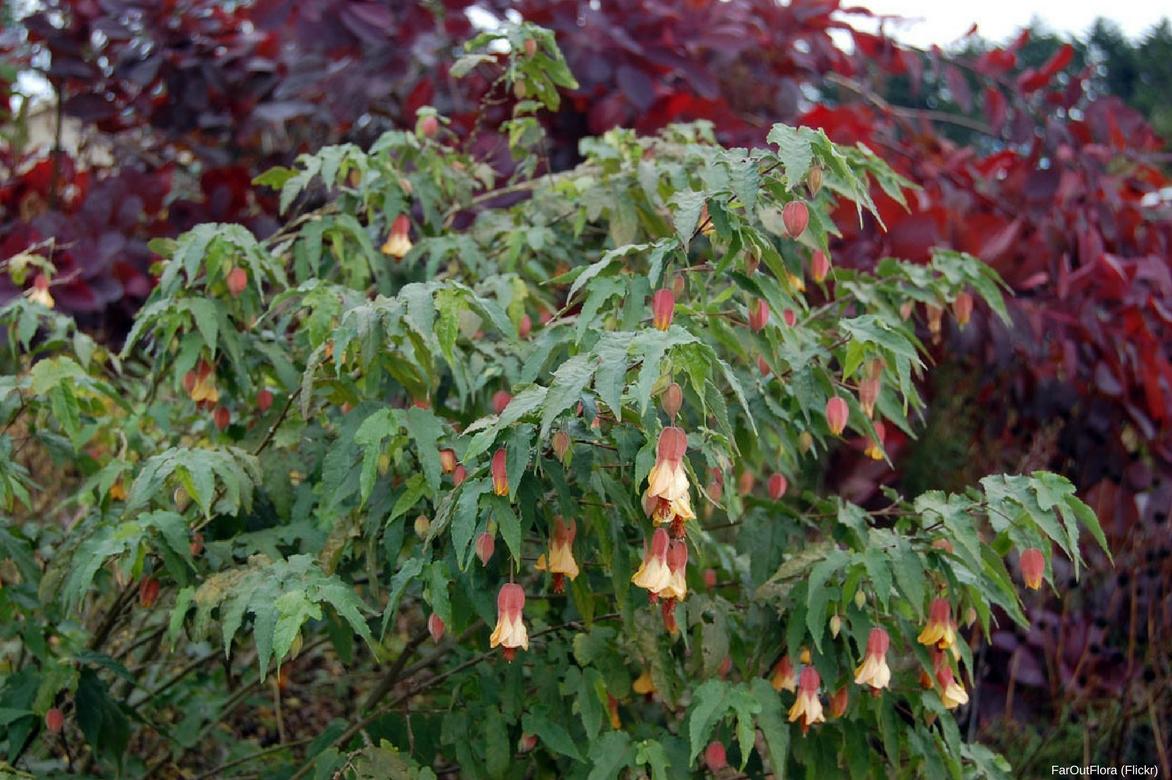
The flowering of Abutilons pairs well with purple foliage.
It pairs well with large herbaceous plants such as foxgloves, delphiniums, and silver thistles.
Its flowering season is suitable for associations with bush roses and early-flowering buddleias.
The upright species (A. vitifolium, Abutilon x suntense) harmonise well alongside summer-flowering shrubs such as hibiscus, abelias, fuchsias, and oleanders.

An example of a hedge association: Abutilon x Suntense – Abelia grandiflora – Hibiscus syriacus ‘Oiseau Bleu’ – Nerium oleander – Hibiscus syriacus ‘Blue Chiffon’.
Climbing species such as Abutilon megapotamicum pair well with other climbing voluble plants like Sollya heterophylla, a lovely little liana from mild climates, Campsis capreolata, a large and perfectly original liana, Hardenbergia violacea, or even Solanum rantonetti or jasminoides.
Abutilon will make an elegant support for a clematis or honeysuckle. Potted specimens look wonderful surrounded by Black-eyed Susans or nasturtiums.
→ Discover more association ideas with Abutilon in our advice sheet!
Useful resources
- Discover this bush for mild climates, featuring beautiful foliage and a long flowering period
- How to grow an abutilon in a pot?
- Abutilon: How to choose the ideal variety for your garden or terrace?
- Diseases and pests of Abutilon: how to identify, prevent, and treat them?
- Subscribe!
- Contents































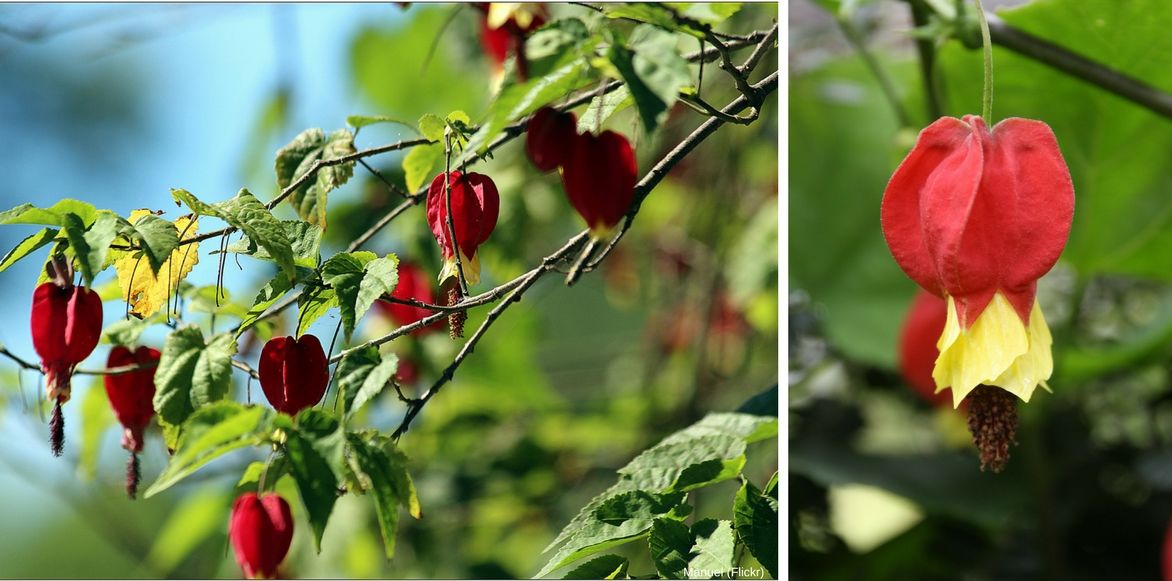
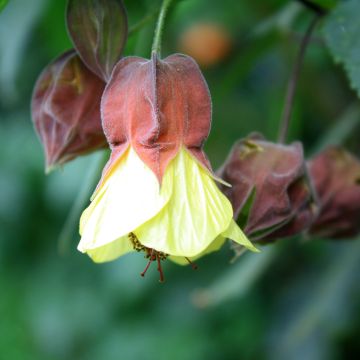

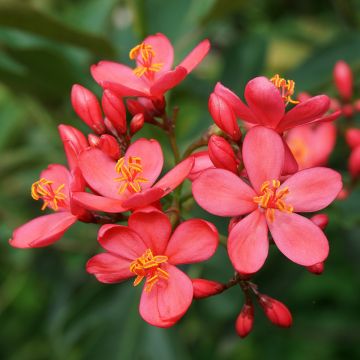

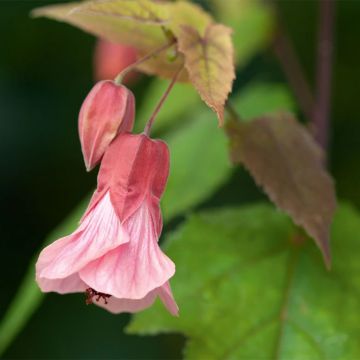

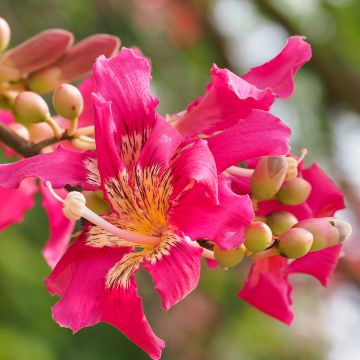
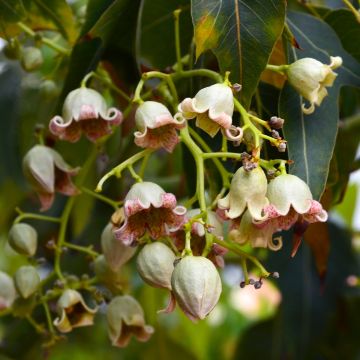
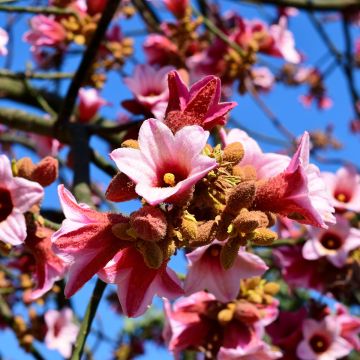
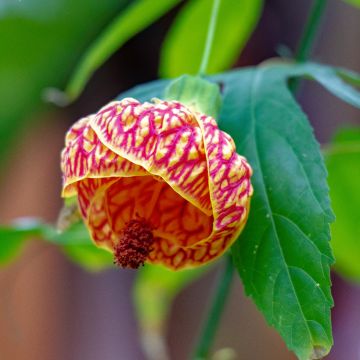
Comments